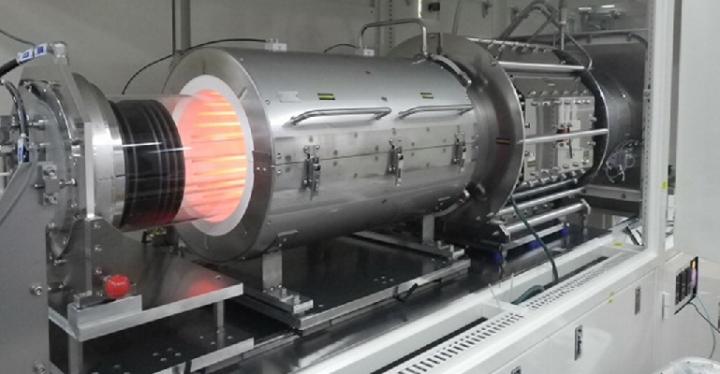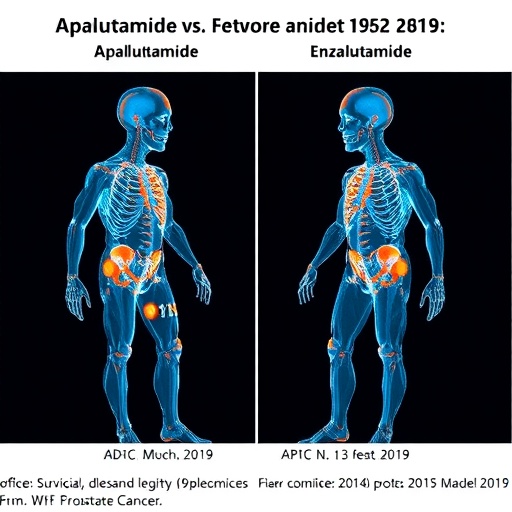A breakthrough in the development of power devices

Credit: Taiyo Nippon Sanso Co.
JST announces the successful development of a high-quality bulk GaN growth device based on the THVPE method, a development topic of the Newly extended Technology transfer Program (NexTEP). Development towards commercial applicability was carried out by the Innovation and R&D Division of Taiyo Nippon Sanso from August 2013 to March 2019, based on the research of Professor Akinori Koukitsu of the Tokyo University of Agriculture and Technology. The research team has developed a GaN crystal manufacturing device that achieves high speed, high quality, and continuous growth.
Gallium nitride (GaN) crystal is a semiconductor widely used as a blue light-emitting diode, but it is also well-suited to use as a power device material in equipment for high-speed switch operation and high-voltage, high-current applications. GaN crystal is far superior to silicon crystal, the current mainstream material.
The majority of GaN crystal substrates used in electronic devices are manufactured using the Hydride Vapor Phase Epitaxy (HVPE) *1) method. It is difficult to produce thick GaN crystals using the HVPE method due to distortions in the crystal, and GaN crystals are grown on a seed crystal heterogeneous substrate, and repeatedly peeled off at a thickness of less than 1mm for use. For this reason, commercially practical manufacturing of GaN crystals has not been possible thus far on the basis of cost and crystal quality, particularly in light of the pre- and post-work required in the process, such as cleaning the furnace.
Taiyo Nippon Sanso has advanced the HVPE method to develop a GaN crystal production system that achieves high-speed, high-quality, continuous growth through the Tri-halide Vapor Phase Epitaxy (THVPE) method utilizing a gallium trichloride-ammonia reaction system. The THVPE method succeeds in forming high-quality crystals at a high-speed growth rate three times faster than current conventional methods, with only one-fifth the current rate of dislocation *2) defects.
The new THVPE method also offers many cost advantages over current techniques, such as not deteriorating quartz glass tube as the reactor, preventing reduction of crystal growth area *3), and reducing the occurrence of unnecessary polycrystals *4).
If the THVPE technique can be further developed to achieve production of thick GaN crystals, it will allow the mass-production of GaN crystal substrates through slicing. The new technique holds strong promise to achieve a breakthrough in the development of low-cost, high-performance GaN devices.
*1) Hydride Vapor Phase Epitaxy (HVPE Method)
The HVPE method is mainly used for the production of compound semiconductor crystals. A metallic chloride gas and a non-metallic hydride gas react on a substrate to epitaxially grow a semiconductor crystal on the substrate. Epitaxial growth maintains the crystal arrangement of the substrate, so the quality of the substrate affects the crystals grown on the substrate.
HVPE offers a faster growth rate (100 micrometers per hour) compared to other practical vapor deposition methods (MOCVD, MBE, etc.), together with the benefit of fewer carbon impurities. As multiple crystals are grown one after another, however, the interface between the crystals is difficult to flatten. This has led to a demand in industry for a GaN substrate manufacturing device capable of producing GaN seed crystals to a certain thickness, which are then sliced off to produce the final substrate as a sheet.
*2) Dislocation
Dislocation is a linear defect existing in a crystal. Dislocations are categorized based on the manner of displacement, such as edge dislocations, screw dislocations, and mixed dislocations. Hexagonal crystals such as GaN are susceptible to threading dislocation during growth. If such a dislocation exists in the substrate, it will degrade the quality of crystals manufactured using epitaxial growth methods such as HVPE, as well as the final product using the defective crystals.
*3) Reduction of crystal growth area
The properties and growth rate of crystals vary based on their orientation. When using the standard HVPE method to grow GaN crystals, a particular surface on the crystal will begin growing at faster, and the crystal will continue growing from that surface point as it thickens. As a result, the crystal growth area decreases as it grows, leading to a turret-like shape. In contrast, the THVPE method uses the N-polar surface for crystal growth, opposite to the Ga surface. This leads to the reverse phenomenon, and the uppermost growth surface does not decrease even as the crystal grows.
*4) Polycrystal
A crystalline body consisting of many individual, minute crystals. Polycrystals are also known as miscellaneous crystals.
###
Media Contact
Akira Yamaguchi
[email protected]
81-285-298-292
Original Source
https:/




